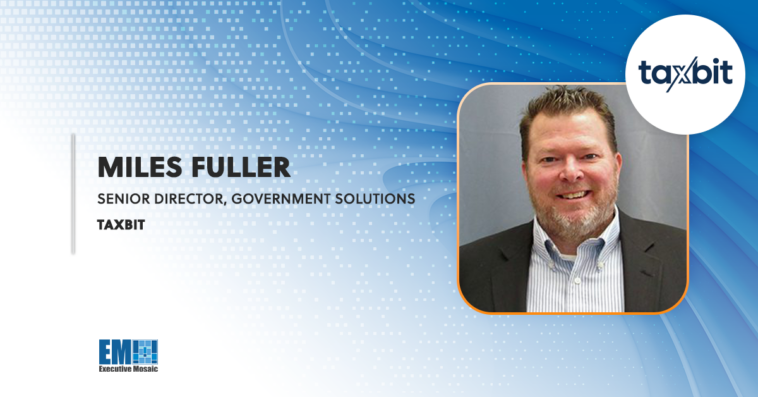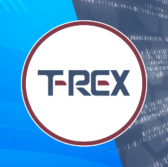The Treasury Department and the IRS released final digital asset tax reporting regulations on June 28. The regulations establish rules for what data needs to be collected by digital asset brokers and reported to the IRS for tax purposes, while also clarifying rules for taxpayers regarding how capital gain or loss on the sale of digital assets can be calculated.
These regulations implement reporting requirements passed by Congress in November 2021 as part of the Infrastructure Investment and Jobs Act. Taxbit’s enterprise-grade tax and accounting platform enables digital asset brokers to meet their reporting obligations in the ever-changing regulatory landscape.
Miles Fuller, senior director of government solutions at Taxbit, recently sat down with ExecutiveBiz to discuss the regulations and what preparation for IRS enforcement will entail.
ExecutiveBiz: Before we dive into the regulations, can you please give us an overview of your professional background and what it is that you do at Taxbit?
Miles Fuller: Of course. I’m the senior director of government solutions at Taxbit, advising our government customers, such as the IRS, about anything and everything related to digital assets. This builds directly on my previous professional experience, as I spent over 15 years as a lawyer for the IRS.
As senior counsel for the IRS, I represented the agency in court on a variety of tax issues, whether related to financial products or complex abusive tax schemes. Tax litigation and tax procedure are without a doubt my bread and butter. But during my last few years at the IRS, my attention really began to shift to digital asset tax issues—from examination techniques to information gathering—which is what spurred my decision to join Taxbit in early 2022.
EBiz: Can you briefly describe the contents of these regulations and articulate why they are unique from other financial regulations?
Fuller: The Treasury Department’s recently finalized regulations serve two main purposes. First, they clarify which businesses serving customers in the digital asset space will be required to report information to customers (and the IRS) about taxable transactions undertaken by those customers. Second, it provides much needed clarity for individual taxpayers on how to track and account for their digital asset activities, reducing the burden on those individuals with filing accurate tax returns. Ultimately, the regulations reaffirm the IRS’ commitment to embracing the asset class in the US financial market.
What’s unique about these regulations is that they are designed specifically to accommodate the nuances associated with digital assets—including cryptocurrencies, stablecoins and NFTs—and offer specific rules and requirements for information reporting, including guidance that is specific to the asset type. For example, reporting requirements are different for different categories of assets such as certain stablecoins or non-fungible tokens, relative to typical assets like bitcoin or ether.
Much of the guidance stems from the same approach taken for information reporting and taxation related to traditional financial instruments. However, digital assets are much more complex than traditional financial assets and behave in very different ways, so a nuanced approach is critical for easing the compliance burden.
EBiz: How is the IRS preparing to enforce new regulations, and what implementation challenges may the agency need to overcome?
Fuller: For the IRS, having regulations that dictate the exact type of information they will be receiving makes it much easier to be prepared to accept said information. Preparation will include putting in place the procedures that must be followed to properly process 1099-DA forms (a digital asset specific tax form), while also setting protocols for when information will need to be flagged for further review or a possible examination. Previously, there was no standardized data structure for how information was recorded by reporting entities in this space, which made the review and interpretation of data difficult for both taxpayers and the IRS. The new regulations will reduce some of those issues as information returns are provided to taxpayers and the IRS will follow a standard structure.
Data standardization is not a holistic solution, though. For example, crypto transactions often don’t involve U.S. dollars, which can make calculating the value of an asset challenging. Asset identification itself is another issue. No common registry exists for digital assets and names and identifying symbols may be reused or differ from broker to broker. Ensuring that the correct asset is being identified and reported with accurate pricing is a novel issue the IRS has not encountered with respect to traditional financial assets.
Another challenge that may arise is the need for a scalable system. Digital assets, by design, are highly fractionalizable and easily transferred, traded, or otherwise disposed of. This means that the IRS is likely to receive a high volume of information relating to digital assets. The IRS will need to be ready both to handle the high volume of data it will receive and to work with that data effectively. At the same time, the IRS must internally work to fill any knowledge and technology gaps that exist, which can be done through upskilling its personnel and leveraging strategic partnerships.
EBiz: Will recent IRS modernization efforts help the agency better approach compliance and enforcement efforts around digital assets?
Fuller: Yes, in fact, these regulations come at an interesting time in the agency’s history. The IRS has undergone massive digital transformation, most notably with e-filing initiatives that will have a huge impact on how taxpayers interact with the agency. Given that the IRS will now have a dedicated form for digital assets (1099-DA), and has a clear framework for what enforcement will look like, the agency is uniquely positioned to set in place the specific tools, processes and standards to begin accepting digital asset tax data.
In fact, the IRS just issued the final draft of the 1099-DA form on August 9, which reflects the final guidance of Treasury’s June regulations. The release of this form is a positive step towards enforcement and implementation.
In some sense, the digital asset space offers a fresh start, since all the information comes in a digital format to begin with. Thus, it also serves as a kind of digital-native sandbox. The lessons learned from digital assets can then be extrapolated to legacy systems.
EBiz: How is Taxbit helping?
Fuller: Taxbit has had the opportunity to assist the IRS on digital asset enforcement matters for the past few years, working to process data obtained as part of examinations and help the IRS overcome complexities with that data relating to variances in format, asset identification, valuation of assets and isolated what may or may not be taxable.
As the IRS moves closer to implementing new reporting regulations in 2026, Taxbit is committed to ensuring a smooth and efficient process for digital asset brokers. Its scalable platform is built to adapt to the evolving complexities of digital asset reporting, including the 1099-DA requirements. Overall, it’s an extremely exciting time in the digital asset space and Taxbit is thrilled to be the partner to assist brokers in confidently navigating these new reporting requirements.





